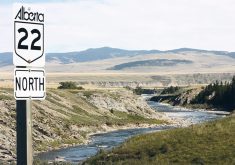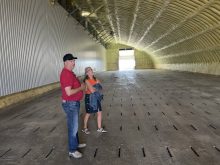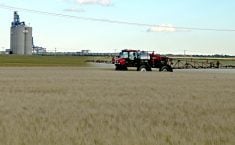GRANDE PRAIRIE, Alta. (Staff) – A cure for a canola disease which causes more than $100 million dollars damage annually to Peace country canola crops is still a long way off, said the scientist working on a resistant canola.
“We still don’t have even a single line to expand. It’s going to be while, I’m afraid,” said Don Woods, a plant breeder with Agriculture Canada’s research station in Beaverlodge.
“It’s our most important disease in the Peace Region,” Woods told the Alberta Canola Producers Commission annual meeting held here two weeks ago.
Read Also

New coal mine proposal met with old concerns
A smaller version of the previously rejected Grassy Mountain coal mine project in Crowsnest Pass is back on the table, and the Livingstone Landowners Group continues to voice concerns about the environmental risks.
“One hundred percent of the fields have the disease, but the level of severity varies.”
Brown girdling root rot is a series of lesions that develop on the root just below the soil surface. After the canola flowers, the lesions slowly expand, eventually strangling the root.
For the past few years, Woods has been searching for a line of canola resistant to the three most serious diseases: white rust, brown girdling root rot and blackleg.
He has discovered how to breed resistance to white rust into the plant. He has also found a source of resistance for blackleg in a sub species of polish canola.
In greenhouse studies the plants showed resistance to blackleg, but couldn’t mimic that trait in field trials.
“We have greenhouse data that say we have resistance, but no field data.”
In 1993, Woods evaluated 93 lines of canola. While some showed signs of resistance to root rot, few retained the other characteristics important to canola producers, like low glucosinolate and erucic acid levels.
In 1994 he took 11 of the better lines and grew them in the Peace region of northern Alberta and in Winnipeg. Results were so varied they were almost useless.
“It’s as if we were selecting for two different diseases. The Winnipeg results were so different,” he said.
















